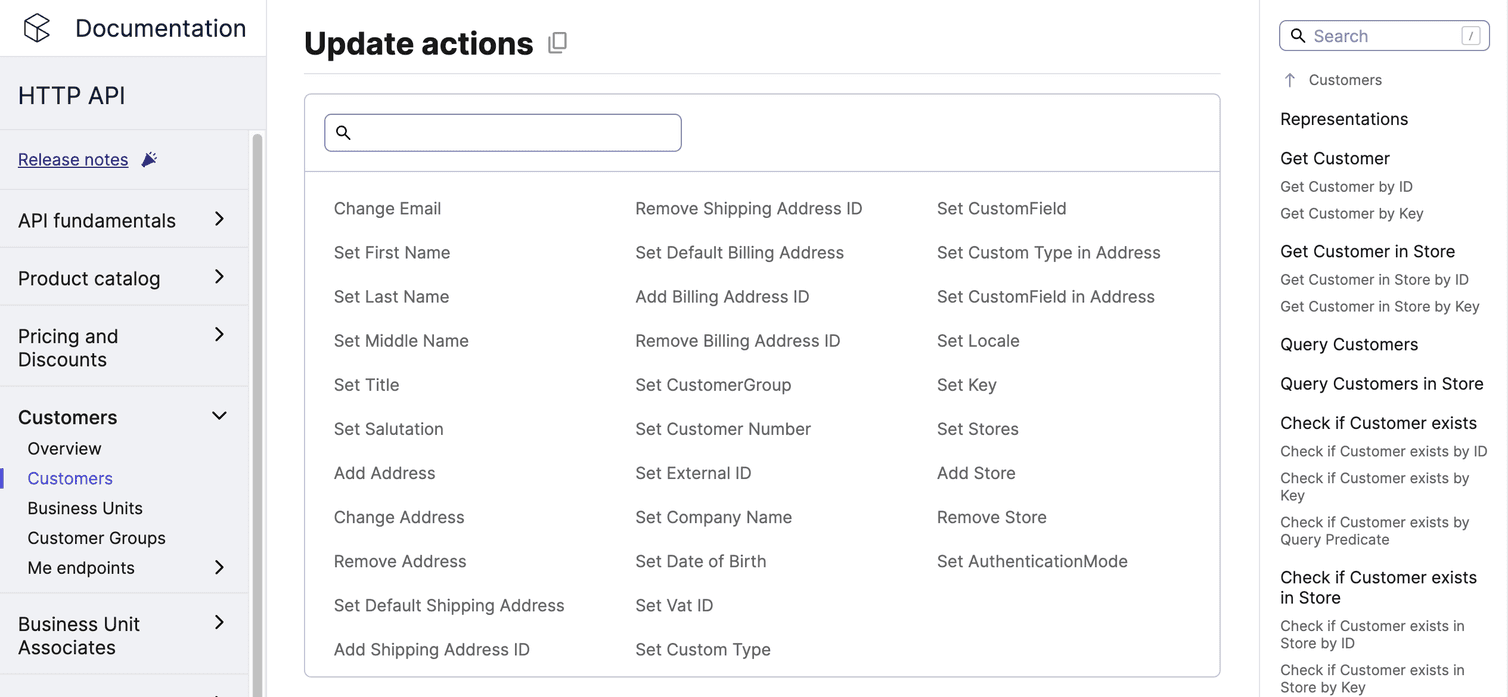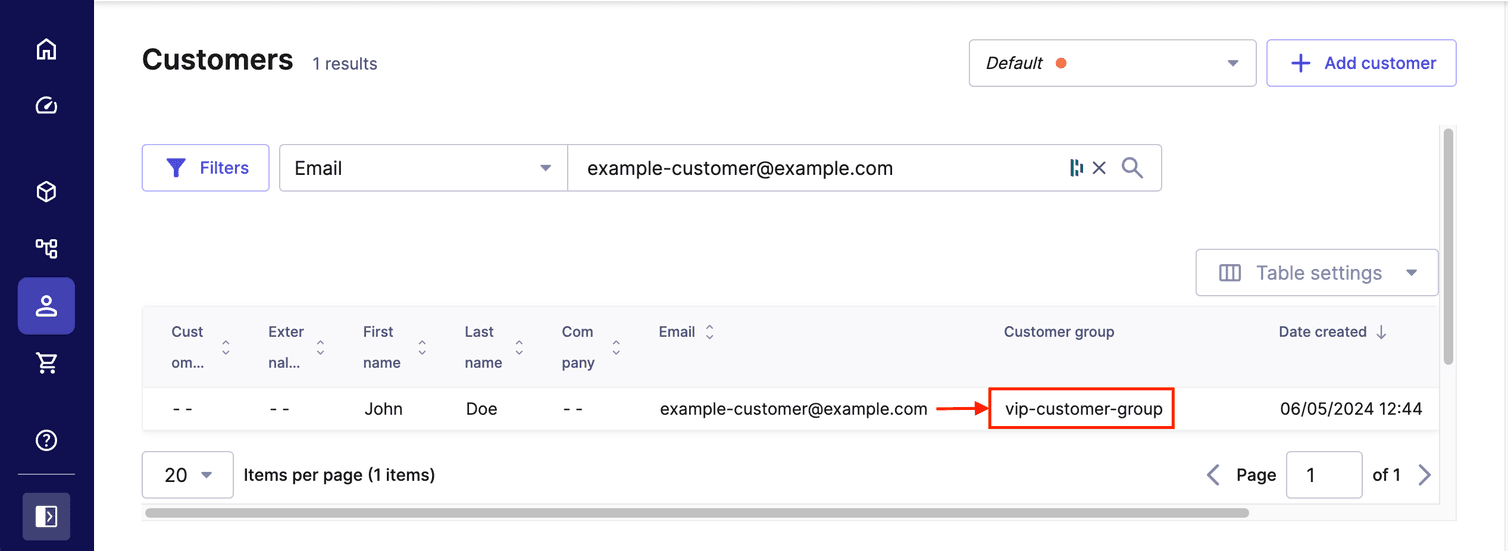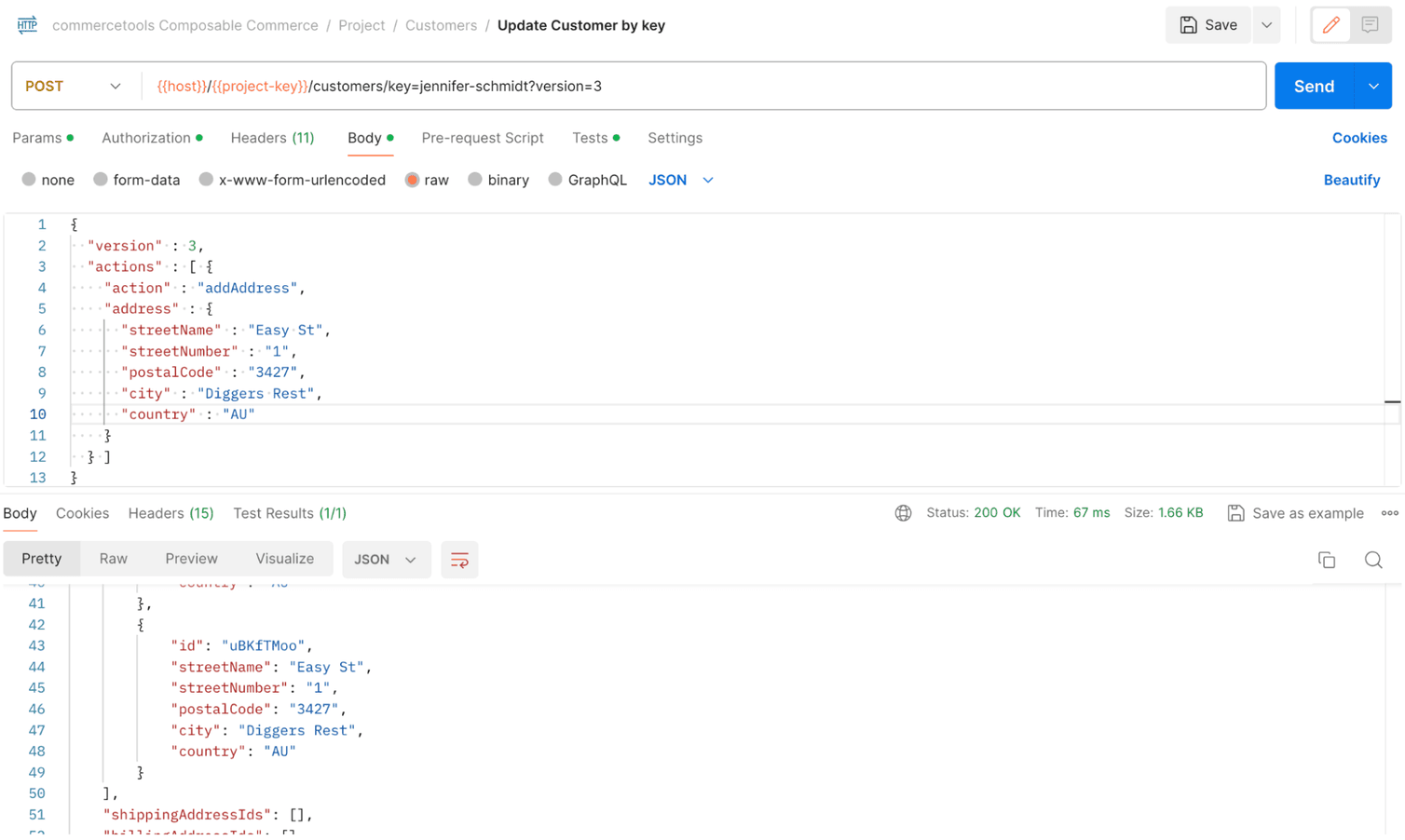As we have already seen, we can update a resource with POST request that includes both:
- the correct version number
- an array of update actions
id or key to identify the resource to update, and the current version number with a list of update actions. Versions only exist in the created resource and not the draft payload.
key: vip-customer-group.version number in your update actions.As with creating a Customer, the Java SDK makes heavy use of the builder pattern. We use this pattern to construct the update action and the reference to the Customer Group.
In the TypeScript SDK, you must build the correct structure yourself. However, it is quite interesting how similar both programming languages are in all our exercises.
Use the SDKs
TypeScript
Java
customerUpdateGroup.js and copy the following code:import { apiRoot } from '../impl/apiClient.js';
const customerKey = 'jon-doe-customer';
const customerGroupId = 'vip-customer-group';
// Change the version number if necessary
const customerVersion = 1;
async function customerUpdateGroup(customerKey, customerGroupId, version) {
try {
const response = await apiRoot
.customers()
.withKey({ key: customerKey })
.post({
body: {
version: version,
actions: [
{
action: 'setCustomerGroup',
customerGroup: { key: customerGroupId },
},
],
},
})
.execute();
console.log('Success', JSON.stringify(response.body, null, 2));
} catch (error) {
console.log(JSON.stringify(error, null, 2));
}
}
customerUpdateGroup(customerKey, customerGroupId, customerVersion);
You might already argue that hardcoding the version number is not a good idea. You are right. We did this to keep the code very short and concise.
Response
Let's first verify that the Customer has been added to the correct Customer Group.
vip-customer-group.
Another example
addAddress update action which requires providing information about the address. Check the documentation to understand what fields can be set for this action.POST https://api.{region}.commercetools.com/{projectKey}/customers/{id}
Authorization: Bearer my_token
Content-Type: application/json
{
"version" : 3,
"actions" : [ {
"action" : "addAddress",
"address" : {
"streetName" : "Easy St",
"streetNumber" : "1",
"postalCode" : "3427",
"city" : "Diggers Rest",
"country" : "AU"
}
} ]
}
Here is how it would look in Postman:

key. If we send multiple addAddress requests with the correct version and the same address, Composable Commerce will create duplicates of the address, each with a unique id. This is because we have not set a key as a unique identifier.key and try to add multiple addresses with the same key, then we will get a helpful error: The given address with 'key' {key-used} is already present in the Customer. and no duplicates will be created.keys is very important to create and manage resources.Now check your Customer in your Composable Commerce Project. You will find the new address has been added to the Customer's addresses.